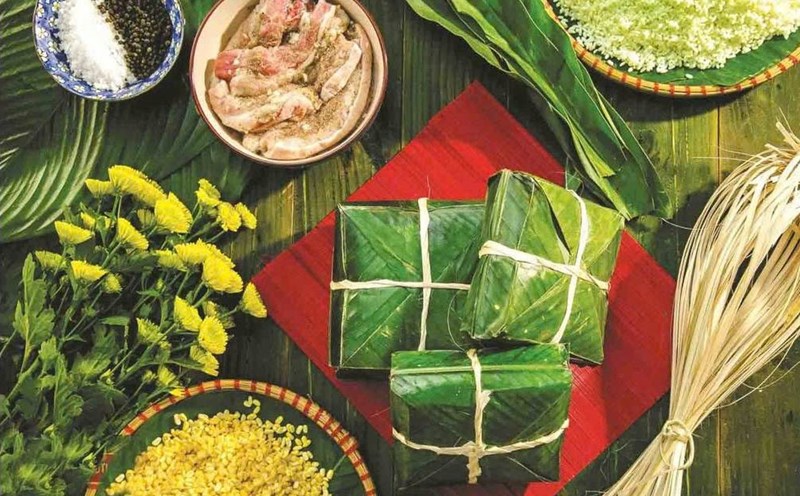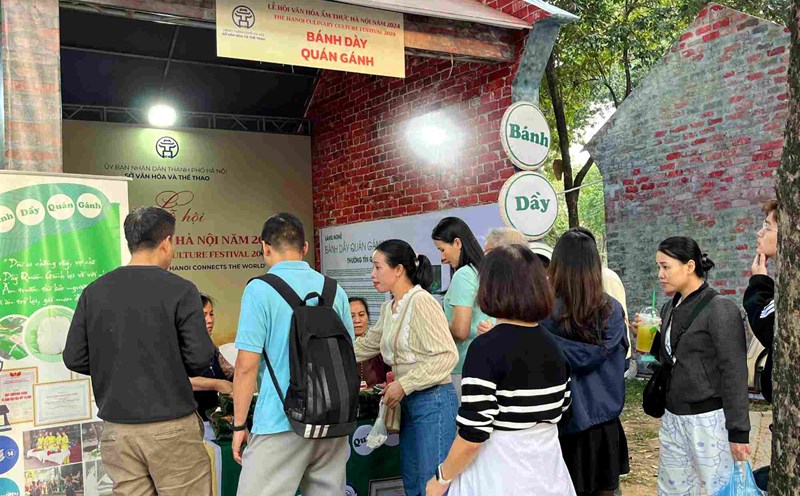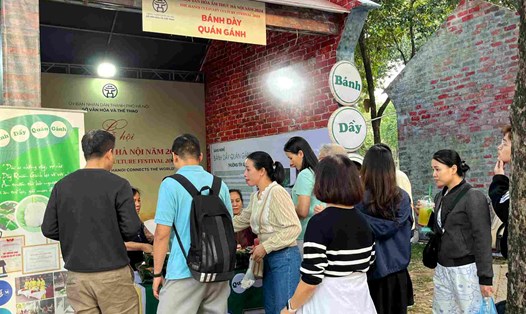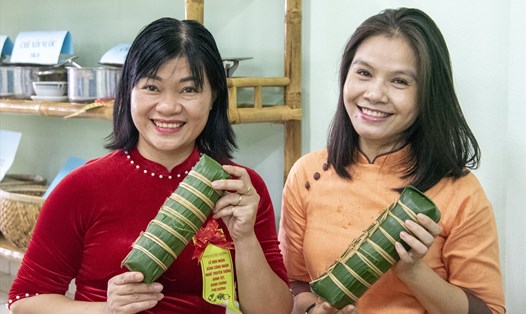Stylish and sophisticated
Tet Nguyen Dan is not only an occasion for family reunions, but also a time for Vietnamese people to recreate long-standing traditional customs. Among them, the custom of wrapping Chung cake and Tet cake holds a special place, especially in the ancient capital of Hue.
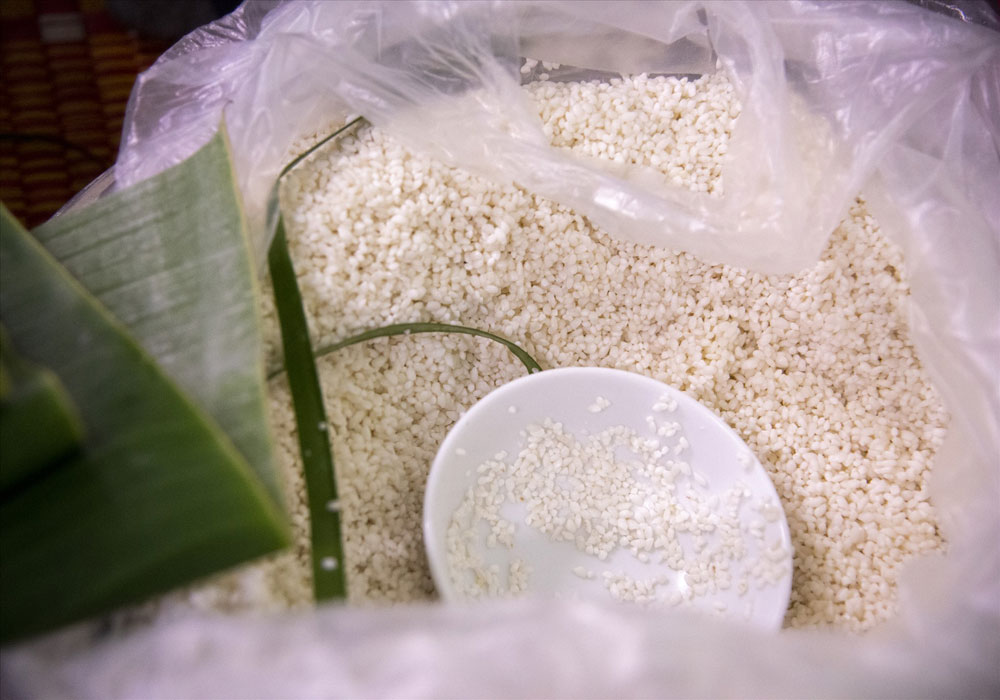
Making cakes is not simply a preparation for Tet, but also an art, reflecting sophisticated and delicate culinary flavors and the combination of royal and folk culture.
Unlike the popular banh chung in the North, banh tet is a traditional cake mainly used in the Tet tray of people in the Central and Southern regions. In Hue, banh tet has a very unique style, prepared and presented with the same sophistication as royal dishes.
In particular, Hue people often make banh tet la cam, which stands out with its deep purple color from the water of the leaves, creating a difference and visual appeal.
The ingredients for making Hue banh tet are carefully selected. Sticky rice, the main ingredient of the cake, must be fragrant and soft, with even grains, washed and soaked overnight to soften. Purple leaves, the type of leaves that create the characteristic purple color, are thoroughly cooked to get the colored water to soak the rice, giving the cake an eye-catching color after cooking.
The filling is usually peeled mung beans, cooked until soft and mixed with a little salt. The savory filling will have pork belly, marinated with onions, pepper, and fish sauce before being rolled into the cake. In particular, Hue people pay great attention to the freshness of the meat, because this is an important factor in making the cake filling fragrant and fatty.
Banana leaves used to wrap the cake are also handled very carefully. The leaves must be fresh green, not torn, washed and heated over a fire to soften them, making it easier to wrap the cake. The leaves not only help the cake retain its natural flavor but also create a beautiful green, shiny crust after cooking.
Sophisticated in every step
Hue people often soak rice in purple leaf water for 3-4 hours so that the purple color permeates each grain. The filling is prepared in advance, the pork belly is cut into bite-sized pieces, and seasoned with spices. After being cooked, the mung beans are divided into small pieces to make it easier to roll into the cake.
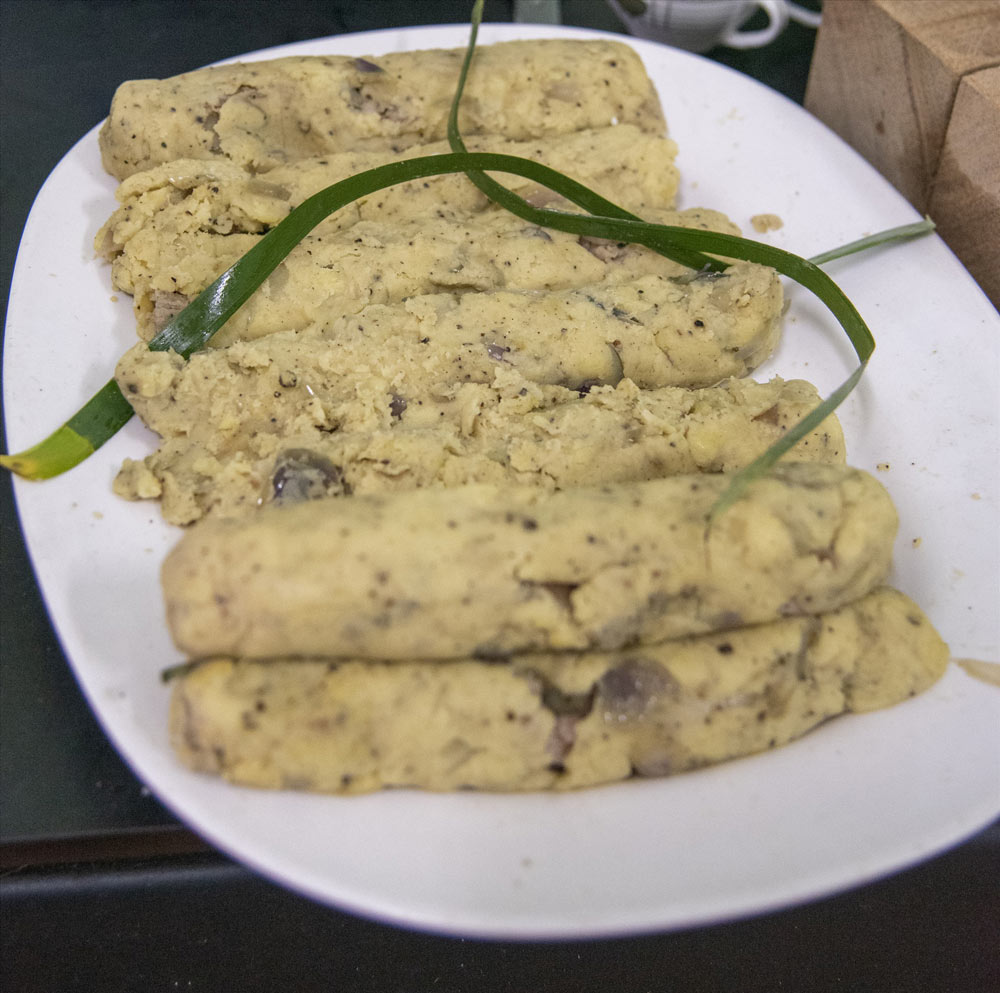
Wrapping banh tet in Hue requires skill and coordination among family members. A layer of green banana leaves is spread out, purple sticky rice is spread evenly, then a layer of mung bean and pork filling. Rice is then covered to cover the filling. The wrapper will roll the cake, tie it tightly with bamboo strings, creating long, sturdy cakes.
In Hue, banh tet is often wrapped small and evenly, with high aesthetic value. Each cake is not only a dish but also a symbol of respect and ingenuity.
Hue banh tet is cooked in large pots on wood or charcoal stoves. The pot must have enough water to ensure the cake is cooked evenly, usually for 6-8 hours. During the cooking process, people must continuously add water to prevent the pot from drying out.
After the cake is cooked, it is taken out and hung up to drain. This is also an important step to help the cake retain its elasticity and not become soggy.
Although banh tet is more popular in Hue, banh chung is still wrapped in many families. Banh chung in Hue also has its own characteristics with square wrapping, evenly arranged banana leaves, rice and fillings carefully measured to create a cake that is both beautiful and delicious.
Hue people believe that banh chung and banh tet symbolize fullness and completeness. Therefore, wrapping and offering these two types of cakes is an indispensable part of Tet.
More than just food
Banh chung and banh tet are not only dishes but also have deep spiritual meaning during Tet. They are offerings to ancestors, expressing gratitude and wishing for a prosperous and fulfilling new year.
Wrapping cakes is also an opportunity for families to gather together, share joy and create beautiful memories during the spring season.
In Hue, banh tet is also used as a gift, expressing the affection and respect between the giver and the receiver. It is also a symbol of connection and sharing.
The custom of wrapping banh chung and banh tet in Hue is a beautiful tradition, containing the spirit and culture of the ancient capital: a testament to love for one's homeland, family, and national traditions.
When Tet comes, when enjoying a piece of fragrant purple sticky rice cake or a square square rice cake, we not only feel the wonderful flavor but also see a meaningful cultural story behind it.

